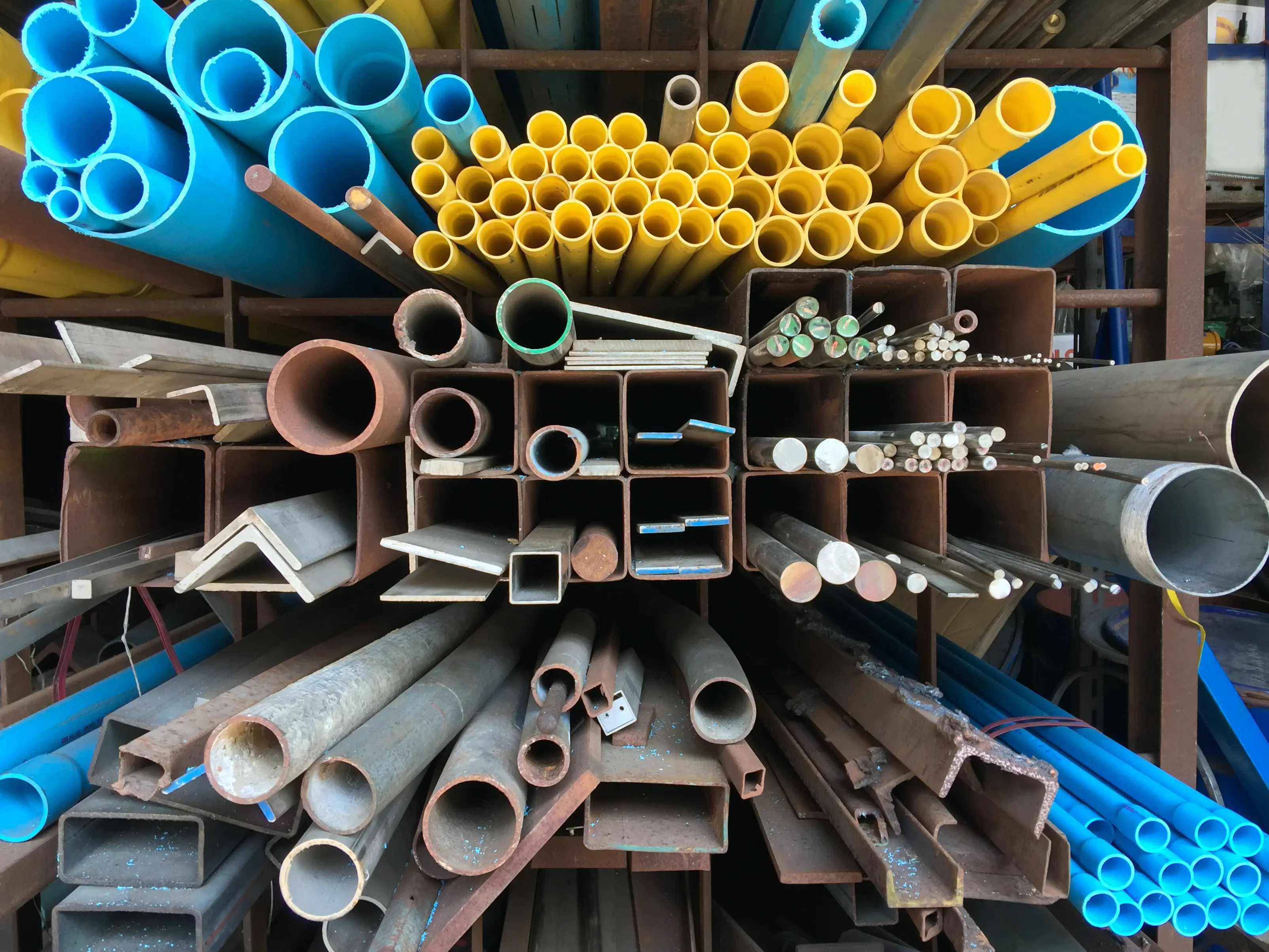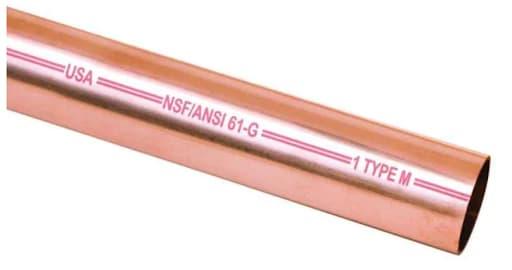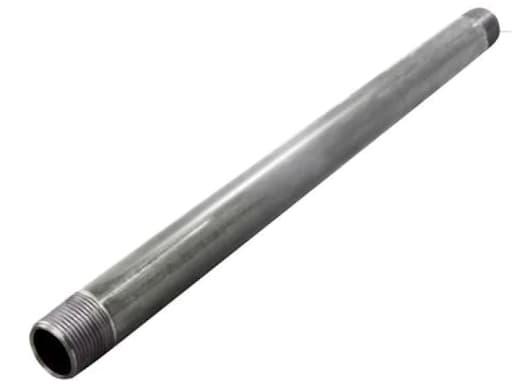08/17/2021
Reviewing The 4 Major Types of Plumbing Pipes

Types of Plumbing Pipes
A lot has changed in the plumbing industry over the years.
New pipe materials are developed, and stronger, better pipes are constantly being pushed into the market. Unlike the early 1900s where galvanized pipes were the only option, both professionals and DIYers now have an array of choices for their plumbing projects. Here are four different types of plumbing pipes commonly used in plumbing systems:
- PEX pipes
- Copper pipes
- Galvanized pipes
- PVC pipes

1. PEX Pipes
While PEX pipes are relatively new in the market, PEX quickly gained traction with DIY users and professional plumbers thanks to its ease of use. PEX pipes, or cross-linked polyethylene pipes, are flexible plastic pipes used for water mains.
PEX piping is color-coded, with blue pipes marking ones for cold water and red pipes for hot water.
Since it’s sturdy and can withstand high water pressure, PEX pipes are mainly used for water supply lines. However, it can also degrade quickly in extreme temperatures and in direct sunlight; it’s best if you use PEX pipes indoors.
Pros
- Easy installation. You only need a crimp ring to install the pipes or join them with copper pipes.
- PEX pipes are really flexible.
Cons
- PEX pipes degrade quickly under ultraviolet rays, so it’s unsuitable for outdoor use and should not be set out in the sun. This will potentially void the warranty.
- May leach carcinogens into your water mains, which make it illegal in several states and poses a serious threat to your health.
- Attracts rodents that may chew through the PEX to get to water.
- Needs to be properly fastened every few feet. In the case of repipe this can result in dozens of random holes cut into your walls and ceilings, adding to your cost and long time lines to complete the job.
- Water chemistry including the use of chloramines and over chlorination can cause pinholes leaks and early pipe failure.
- Exposure to high temperature area can cause the PEX pipe to fail. Avoid running PEX pipes in an attic or other areas that can be exposed to hot weather.

2. Copper Pipes
Copper pipes have been used for decades and are easily the type of pipe with the longest popularity streak, especially for water mains. Copper pipes are the heaviest types of pipes used for water supply lines. If maintained well and in their desired conditions, the thinnest type of copper pipe can last up to 30 years, although there are cases of failure in as little as 5 years.
Copper pipes can come as rigid copper tubing or flexible copper rolls. In residential plumbing systems, copper piping is often used to channel drinking water. It’s sturdy and, unlike plastic pipes, doesn’t degrade under ultraviolet rays.
However, copper piping is also not as flexible as PEX pipes, so it freezes and can burst easily in cold temperatures.
Pros
- Copper pipes are proven to have a long lifespan if maintained properly. Under the ideal condition, the lightest type may even last decades.
Cons
- The rising price of metal makes copper pipes more expensive than the others.
- Water chemistry can cause pinhole and slab leaks.
- Copper pipes need to be installed by someone with experience, as soldering is often required to install the pipes, or you’ll need specialized plumbing tools that allow you to assemble the system without the use of solder and heat.

3. Galvanized Steel Pipes
Galvanized pipes are metal pipes that are threaded at both ends and connected with each other using joints or fittings.
Although not as commonly used in modern houses, these pipes were vastly popular in the early 20th century. Along with cast-iron pipes, you can still find galvanized pipes in older homes. However, they’re increasingly being replaced with plastic and copper pipes (as well as being restored with the patented ePIPE process).
Galvanized steel pipes used to be the main pipe type used in plumbing systems. They’re also commonly used for gas lines, water supply pipes, drain lines, and other systems in a housing structure.
Pros
- Since it’s made of metal, galvanized steel pipes won’t warp or degrade at higher temperatures.
- Galvanized steel pipes have good soundproofing, so it’s suitable for use indoors.
Cons
- Galvanized steel is prone to corrosion and rust, which makes it more likely to have poor water flow and contaminate the water
- The corrosion and buildup in galvanized steel pipes might cause a blockage in your pipes.

4. PVC Pipes
PVC pipes, or polyvinyl chloride pipes, are lightweight plastic pipes commonly used in drain, waste, and vent systems. PVC piping is often white, with the size written in the pipes.
It’s highly durable and since it’s made of plastic, exempt from rust and corrosion, making it perfect for long-term usage. They’re often used to replace galvanized pipes as it’s easier to install, have high durability, and are relatively safer.
While you commonly see it used in sinks, toilets, and shower drains, it can withstand high water pressure, so you might also find it as the main water supply line in some buildings. However, because of concerns about chemical contamination, some states prohibit PVC pipes from being used for water mains.
Pros
- PVC pipes have excellent soundproofing capabilities, making it better for indoor use.
- The smooth lining reduces the chances of blockage in PVC pipes, and since it’s made of plastic, it doesn’t corrode or rust.
Cons
- Degrades quickly on high water temperatures, with an operating temperature of up to 140 degrees Fahrenheit.
- May leach polyvinyl chloride, which can cause reproductive and respiratory issues.
Restore Your Pipes with ePIPE’s Epoxy
Depending on the purpose, the environmental condition, and the local code, the piping materials you should use will differ greatly.
For drain, waste, and vent (DWV) systems, PVC pipes are your best bet, especially if it’s for pool use. Galvanized pipes aren’t used in new construction projects, since they’re hard to install and only used for gas lines in recent years.
For water plumbing systems, PEX pipes and copper pipes are popular options and both offer their own specialties. Although, if you’re doing it on your own, PEX pipe is more popular for DIY projects since it’s easy to install.
If you need to install or replace your pipes and still can’t decide which one to use, consider consulting a professional plumber. The knowledge they have on local building codes and their experience will help homeowners choose the right type of pipe for different use cases.
Alternatively, if you have a leak in your pipes, consider using an epoxy barrier coating to coat your pipes and protect it from future leaks!
ePIPE can help you coat your water supply pipes so they’ll be protected and last longer, all within hours and with minimal disruption.
Want to know how we can help you optimize the lifetime of your water pipes? Let’s talk, and we’ll help you figure it out.
Immerse yourself in more ePIPE information
Loading...
